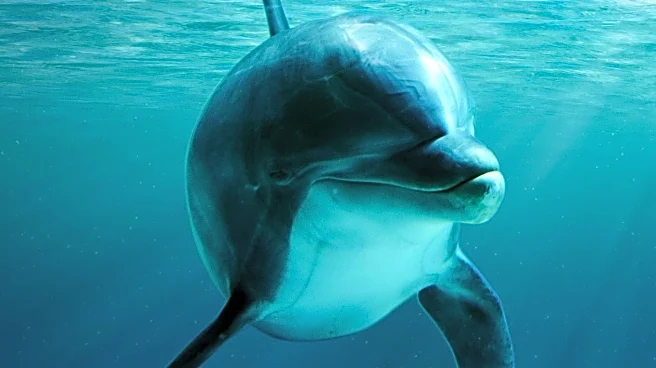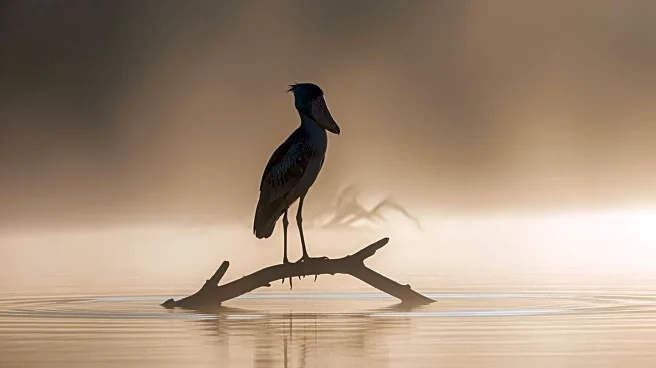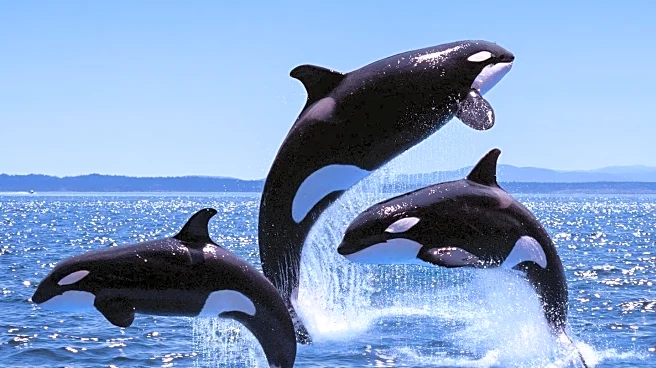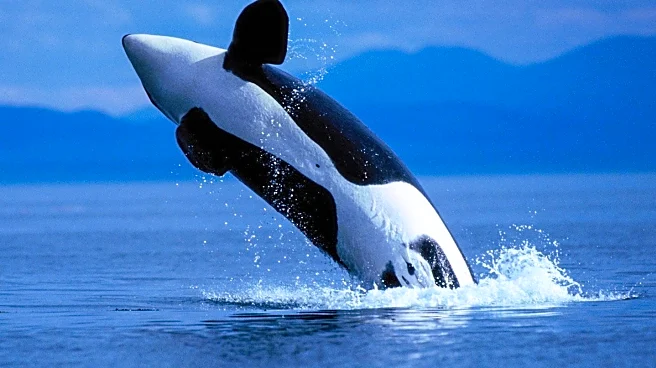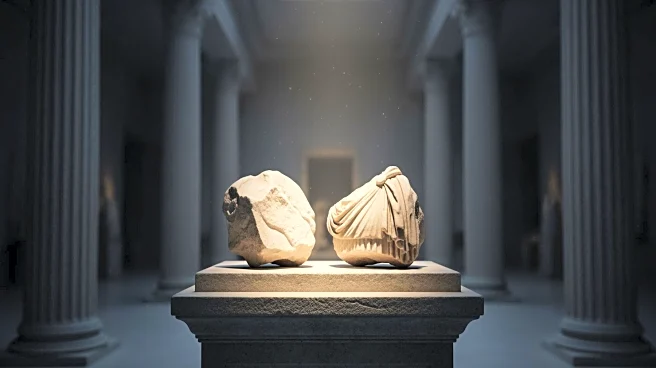What's Happening?
A wild dolphin, nicknamed 'Mimmo,' has become a frequent visitor in the waters near Venice's St. Mark's Square, attracting tourists but also raising safety concerns among marine experts. Dolphins are rare
in the UNESCO World Heritage city's lagoon, with previous sightings occurring during COVID-19 restrictions when boat activity was reduced. Mimmo, believed to have entered the lagoon in late June, has been navigating the busy St. Mark's Basin area, dodging water buses, taxis, and gondolas. Marine biologist Luca Mizzan, head of Venice's Natural History Museum, expressed concerns about the dolphin's safety, particularly the risk of injury from boat propellers. Despite feeding and the noise from boats and crowds, Mimmo remains near St. Mark's Square, prompting experts to monitor its movements closely.
Why It's Important?
The presence of Mimmo in Venice's lagoon highlights the intersection of wildlife and human activity in urban environments. The dolphin's frequent visits pose potential risks due to heavy marine traffic, which could lead to injury. This situation underscores the need for effective wildlife management strategies in areas with significant human activity. The dolphin's attraction to the lagoon, despite the noise and crowds, raises questions about the impact of urban environments on marine life. The situation also presents an opportunity for public education on marine conservation and the importance of protecting wildlife in heavily trafficked areas.
What's Next?
As winter approaches, the lagoon may become less attractive to Mimmo due to the seasonal departure of fish, potentially encouraging the dolphin to return to the open sea. Marine biologists, including Luca Mizzan, are monitoring the situation but acknowledge the difficulty in persuading Mimmo to leave the area. There is no current method to force the dolphin away, and experts are considering the natural changes in the lagoon's environment as a possible solution. Continued observation and research may provide insights into Mimmo's behavior and inform future wildlife management practices in urban marine settings.
Beyond the Headlines
The situation with Mimmo highlights broader ethical considerations regarding human interaction with wildlife. The dolphin's presence in a heavily trafficked area raises questions about the balance between tourism and conservation. It also prompts discussions on the responsibilities of cities to protect wildlife that inadvertently enters urban environments. Long-term, this case could influence policies on marine traffic management and wildlife protection in similar settings.
